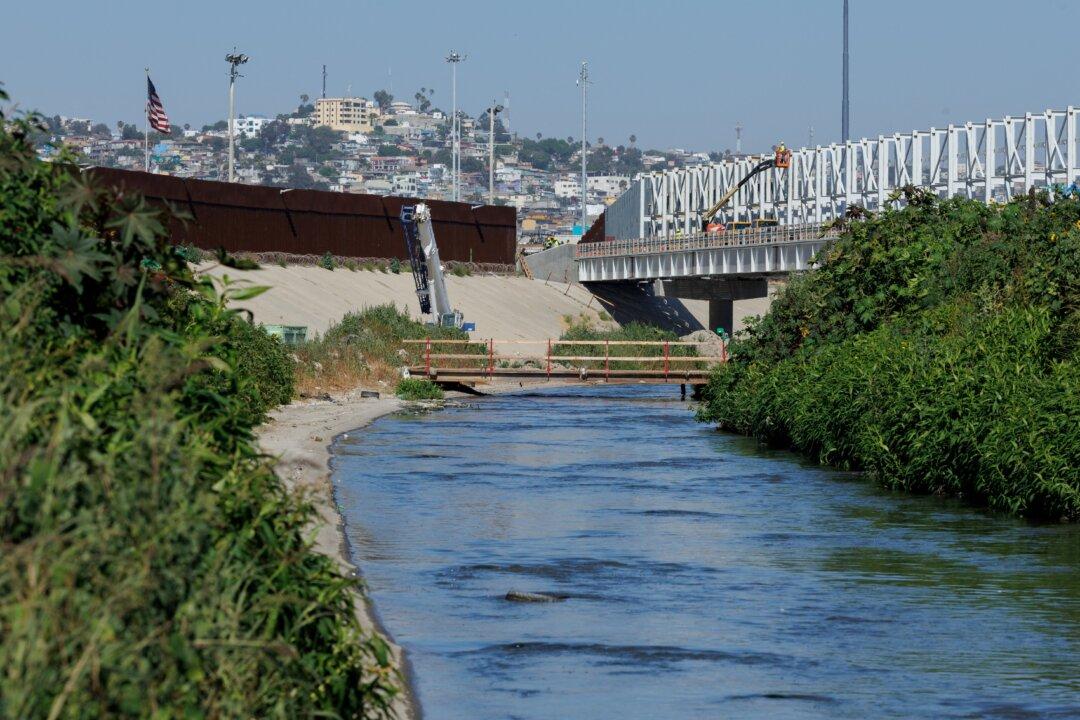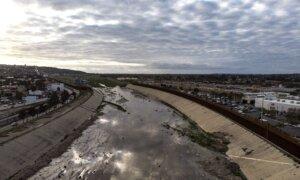Raw sewage from Tijuana, Mexico, flowing into ocean waters along the southern San Diego County coastline has repeatedly closed beaches—one of them for more than 1,000 consecutive days—prompting California officials to ask for emergency help Sept. 5.
The Imperial Beach in southern San Diego County closed to the public on Dec. 8, 2021, when local health officials first declared bacteria in the water had reached a level that threatened public health.
In the last five years, officials estimate that 100 billion gallons of toxic sewage, trash, and stormwater have flowed from Mexico into the Tijuana River Valley and neighboring U.S. communities.
California Sen. Alex Padilla joined congressional Reps. Scott Peters and Juan Vargas, both representing San Diego, at a press conference Thursday to announce newly introduced legislation to target the crisis, which mostly affects residents in the Coronado and South Bay areas.
The problem has also forced the Navy to relocate training for its elite SEALs force, and lifeguards must wear special gear to protect themselves from the health hazard.
“We understand the frustration,” Padilla told residents Thursday.
The senator and other co-sponsors have introduced the Border Water Quality Restoration and Protection Act of 2024 to designate the federal Environmental Protection Agency (EPA) as the coordinator of all federal, state, tribal, and local efforts addressing the sewage crisis.
“It should be an outrage to all of us that in 2024, raw sewage and toxic waste is shutting down public beaches, polluting the air, and threatening the health of our families and readiness of our military and border personnel,” Padilla said.
Padilla, chair of the Senate’s Environment and Public Works Subcommittee on Fisheries, Water, and Wildlife, said the legislation was first introduced by the late Sen. Dianne Feinstein in March 2021, but the bill never made it out of its first committee.
Padilla said he will reintroduce the legislation in the Senate on Sept. 9 when the new session starts, he said.
The bill would allow the EPA to build and maintain infrastructure in the Tijuana River and the New River watershed. The north-flowing New River, whose headwaters start about 15 miles south of the city of Mexicali in Mexico, carries runoff from the city’s urban, industrial, and agricultural waste into the United States.

The bill would also create a new program within the EPA to manage the watershed.
Currently, the pollution crisis is not assigned to any specific agency, according to Vargas.
“From terrible smells to closed beaches, toxic sewage pollution hurts our communities every single day,” Vargas said. “It’s important that we have a streamlined and effective federal response. But right now, there is no one agency in charge of addressing the pollution.”
The Biden administration has not responded to the officials’ requests and did not return a request for information by the time of publication.

Meanwhile, the problem is getting worse, according to the latest data.
Last year, sewage flowed across the border at the highest volume in 25 years, exceeding 44 billion gallons, according to the U.S. International Boundary and Water Commission (IBWC), which owns the South Bay International Wastewater Treatment Plant, located on the border immediately north of Tijuana’s main wastewater pumping station.
The problem has been a concern since 1934, when the U.S. and Mexican governments first cooperated on a report about the sewage problem, according to the IBWC.








